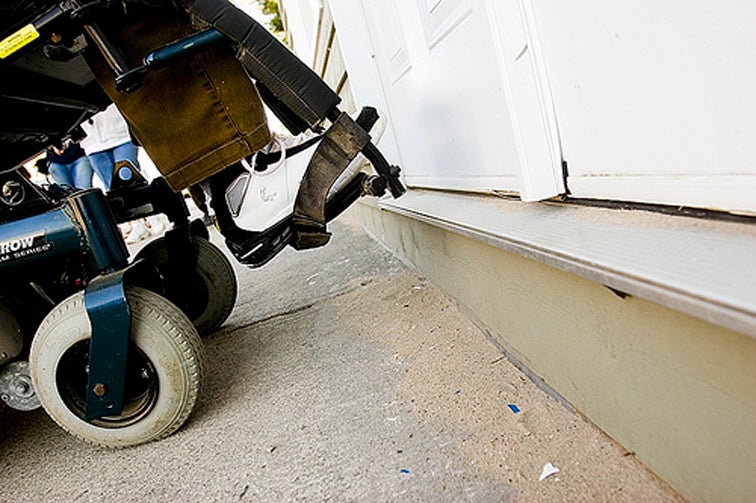Situation Vacant: Building accessible, visitable housing options

In advance of PlanPhilly’s panel discussion about the city’s vacant land strategies on June 12th, Eyes on the Street is collecting and sharing stories from Community Contributors about the effects of vacancy and blight on neighborhood quality of life, community development, and the potential for positive change presented by the city’s vacant property reform efforts.
In our city of old homes, the supply of accessible housing for folks with disabilities falls far short of the demand. Bob Mears, a member of Disabled in Action, shares this Community Contributor piece connecting vacant property reform efforts with the opportunity to build more accessible and visitable housing on the city’s empty lots.
I grew up in New Jersey and moved to Philly in 2003. My niece had a set of twin boys. One of her sons contracted Goodpasture disease, which attacks the lining of the lungs and kidneys. I moved to Mayfair where they were living, to help her out. Two years later, I had a stroke.
After rehab, I was moved to Riverview, a nursing home on State Road near Pennypack Park. They were planning to have me there for the rest of my life. Well, I’m not the kind of person that’s going to listen to that. So I set myself a goal: to get out of that place and live on my own again. It took me a year of walking around the nursing home until I could walk to the bus and get out of there. My sister told me about a place called Liberty Resources, a Center for Independent Living for people with disabilities. I started taking an office skills training class at Liberty. I’d never been in an office – I was a carpenter my whole life. I went there every day, even on the days when we didn’t have classes. After six months, I got a phone call about an apartment being open. A month later I was hired by Liberty Resources to help other people with disabilities find housing.
I care about Philadelphia and I don’t like all the blight we have. I don’t like when I drive through the city and the trash is just everywhere. It’s not a good thing for people to come down the Boulevard and see so much filth. I think a lot of it has to do with a city that doesn’t care anymore. All they care about is where they’re going to get their next dollar. There’s got to be another way. If we’re going to bring people into this city, it’s got to be desirable. No one is going to invest their money into making a building look nice with all this filth around.
When you have a goal, it just wakes up your whole psyche. It was true for me with my motivation to leave the nursing home. Working together to fix the city’s broken property system can inspire people to take action. We can use all some of those vacant lots and abandoned buildings to create things people need, like accessible and visitable housing. Philadelphia was built in the 1700s. The way it’s built, it’s not accessible. You’ve got two or three steps just to get into the house. There are 60,000 people in the city with a disability and only 2,800 places for them to live.
Creating a land bank to deal with vacant land allows us to set priorities. Building accessible and visitable housing should be a goal. No one should have to live in a nursing home. For me, being in my own apartment means freedom. I’m living my life again.
———
Bob Mears is a member of Disabled in Action, which is part of the Campaign to Take Back Vacant Land. He lives in Tacony.
Eyes on the Street is collecting stories about the effects of vacancy on neighborhood quality of life and community development in Philadelphia. If you want to share your story, send it our way.
WHYY is your source for fact-based, in-depth journalism and information. As a nonprofit organization, we rely on financial support from readers like you. Please give today.




